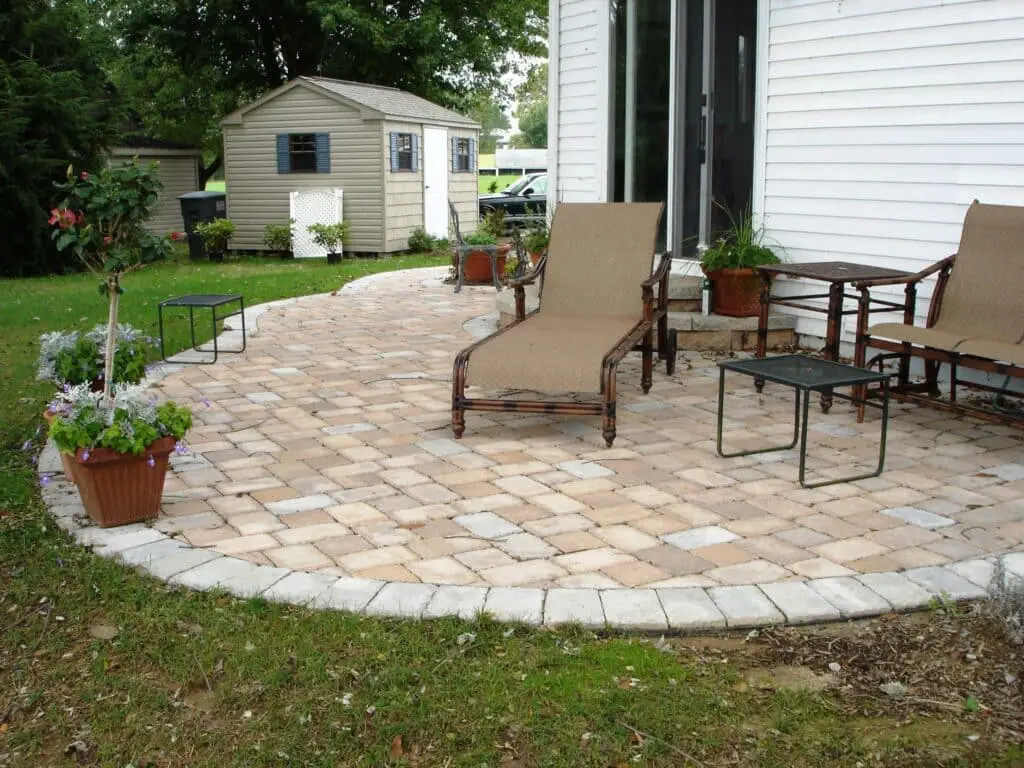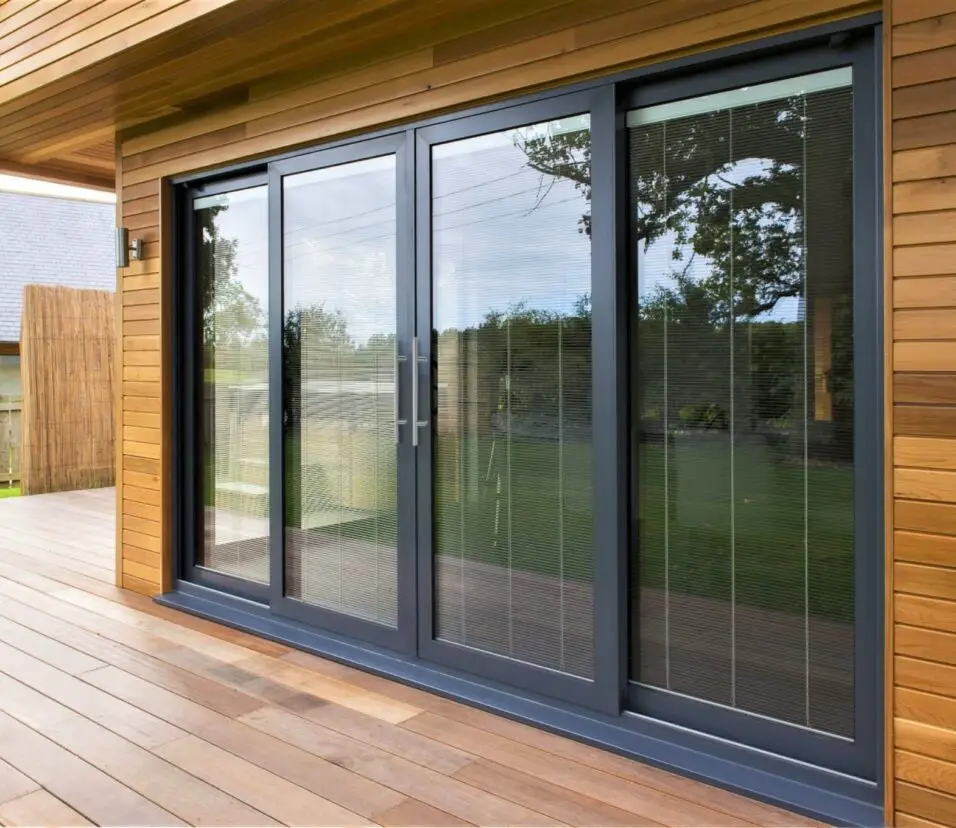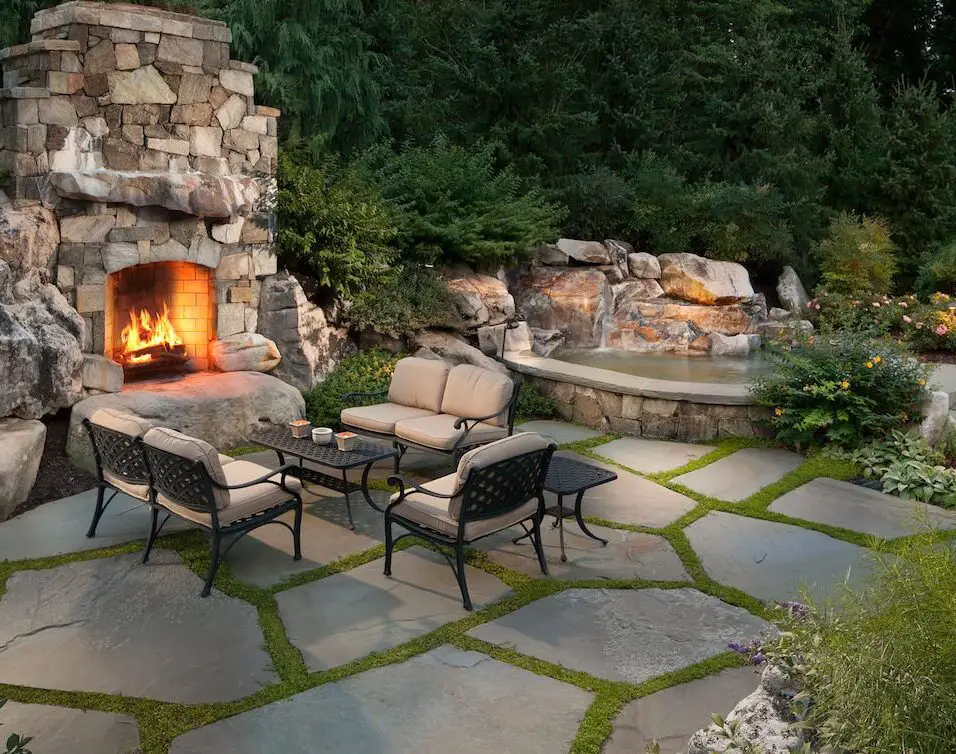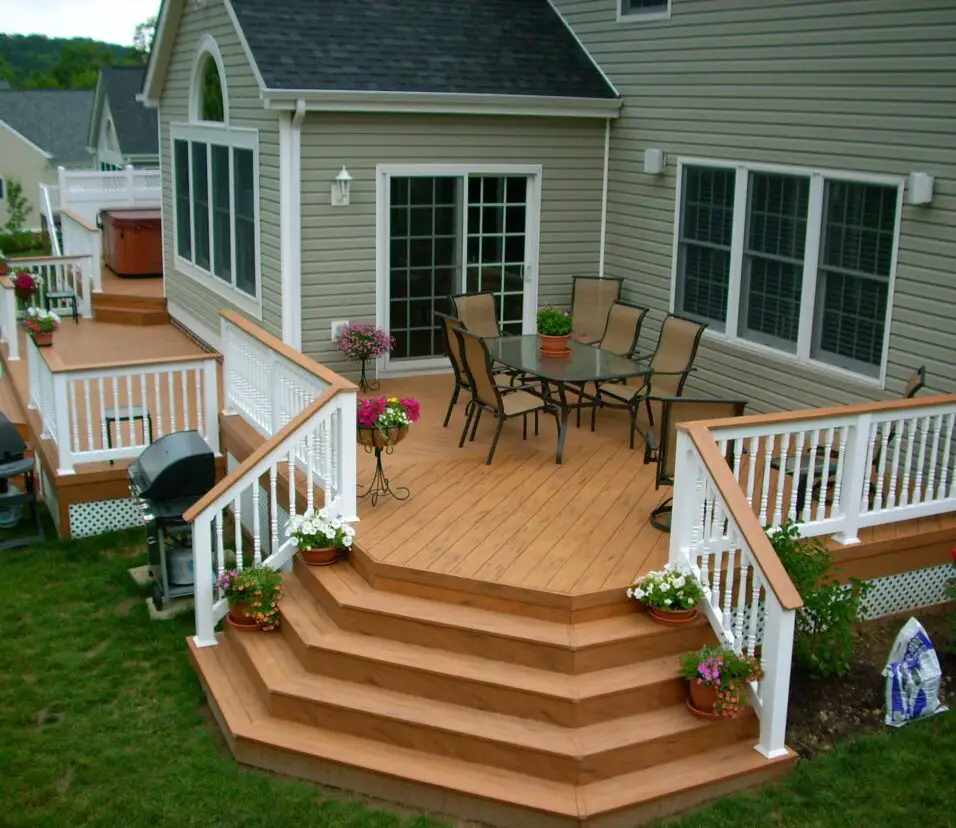How To Fix Uneven Patio Pavers
Introduction
How To Fix Uneven Patio Pavers: Having an uneven patio can be not only unsightly but also a safety hazard. Uneven patio pavers can cause people to trip and fall, leading to potential injuries. Additionally, an uneven patio can make it difficult to place furniture or walk comfortably. If you have noticed that your patio pavers are uneven, it is important to address the issue as soon as possible to prevent further damage and ensure the safety of your outdoor space.
There are several reasons why patio pavers may become uneven over time. One common cause is the natural settling of the ground beneath the pavers. As the soil shifts and compacts, it can cause the pavers to sink or become uneven. Another possible cause is poor installation. If the pavers were not properly leveled or compacted during installation, they may shift and become uneven over time. Additionally, heavy foot traffic or the use of heavy equipment on the patio can also contribute to the pavers becoming uneven.
Fortunately, there are several methods you can use to fix uneven patio roof pavers. One option is to remove the pavers and re-level the ground beneath them. This may involve adding or removing soil to create a level surface. Once the ground is level, the pavers can be reinstalled. Another option is to use a leveling compound to fill in the gaps and create a smooth surface. This method is less invasive and can be a quicker solution.

What do you put under uneven pavers?
When it comes to pavers, uneven surfaces can be a common problem. Whether it’s due to settling, shifting, or poor installation, uneven pavers can not only be unsightly but also pose a safety hazard. Fortunately, there are several options available to address this issue and ensure that your pavers are level and stable.
One option is to use sand or gravel to fill in the gaps between the uneven pavers. This can help to level out the surface and provide a stable base for the pavers. Simply pour the sand or gravel into the gaps and use a broom or brush to sweep it into place. Be sure to fill the gaps completely and compact the sand or gravel to ensure a solid foundation.
If the unevenness is more severe, you may need to consider using a leveling compound. These compounds are specifically designed to level out uneven surfaces and provide a smooth, stable base for pavers. They are typically made of a cement-based material and can be applied directly to the uneven areas. Follow the manufacturer’s instructions for mixing and applying the leveling compound, and be sure to allow it to dry completely before installing the pavers.
In some cases, you may need to remove the uneven pavers and re-install them. This can be a more time-consuming and labor-intensive option, but it may be necessary if the pavers are severely uneven or if the underlying base is unstable. Start by carefully removing the uneven pavers, taking care not to damage the surrounding ones. Once the pavers are removed, assess the underlying base and make any necessary repairs or adjustments. Then, re-install the pavers, ensuring that they are level and properly aligned.
Is it normal for pavers to be uneven?
When it comes to installing pavers, it is not uncommon for them to be uneven. Pavers are individual pieces that are laid down to create a solid surface, such as a patio or walkway. Due to various factors, including the ground’s natural slope, settling, or improper installation, pavers can become uneven over time. While some degree of unevenness is considered normal, excessive unevenness can pose safety hazards and affect the overall appearance and functionality of the paved area.
One of the main reasons why pavers can become uneven is due to the ground’s natural slope. Most outdoor areas have some degree of slope to allow for proper drainage. When pavers are installed on a sloped surface, it can be challenging to achieve a completely level surface. In such cases, slight variations in the height of the pavers are expected and considered normal.
Another factor that can contribute to uneven pavers is settling. Over time, the ground beneath the pavers may shift or settle, causing the pavers to become uneven. This settling can occur due to various reasons, such as changes in soil moisture, temperature fluctuations, or the natural settling process of the ground. While some settling is normal, excessive settling can lead to significant unevenness and may require repairs or adjustments to the pavers.
Improper installation can also result in uneven pavers. If the base material, such as sand or gravel, is not properly compacted or leveled before laying the pavers, it can lead to unevenness. Additionally, if the pavers are not properly aligned or spaced during installation, it can result in an uneven surface. Therefore, it is crucial to hire experienced professionals or follow proper installation guidelines to minimize the chances of uneven pavers.
What is the best material to put under pavers?
When it comes to installing pavers, choosing the right material to put underneath them is crucial for ensuring a long-lasting and stable surface. The material you choose will play a significant role in preventing shifting, settling, and weed growth, as well as providing proper drainage. With so many options available, it can be challenging to determine the best material to use.
One of the most commonly used materials for this purpose is crushed stone or gravel. This material is known for its excellent drainage properties, which help prevent water from pooling underneath the pavers. Additionally, crushed stone provides a stable base that can withstand heavy loads and resist shifting. It also helps to prevent weed growth, as the compacted stone creates a barrier that inhibits weed seeds from germinating.
Another popular choice is sand. Sand is often used as a leveling agent and provides a smooth surface for laying the pavers. It is important to use coarse sand rather than fine sand, as fine sand can wash away easily and lead to uneven surfaces. Coarse sand also allows for better drainage and helps prevent the pavers from shifting over time.
For areas with heavy rainfall or poor drainage, a geotextile fabric may be recommended. This fabric acts as a barrier between the soil and the pavers, preventing the soil from mixing with the base material and causing instability. Geotextile fabric also helps to distribute the weight of the pavers evenly, reducing the risk of settling or sinking.
How do you level ground for pavers without digging?
Leveling ground for pavers without digging can be a challenging task, especially if you want to avoid the labor-intensive process of digging and excavating. However, there are several methods and techniques that you can use to achieve a level surface for your pavers without the need for extensive digging.
One method is to use a leveling compound or sand. This involves spreading a layer of leveling compound or sand over the existing ground and then using a straight edge or level to ensure that the surface is even. This method is particularly useful for small areas or when you only need to level the ground by a small amount.
Another option is to use a vibrating plate compactor. This tool can be rented from a home improvement store and is used to compact the existing ground, making it more stable and level. By running the plate compactor over the surface, you can effectively level the ground without the need for digging.
If you have a larger area to level, you may consider using a laser level. This tool uses laser technology to create a level line across the ground, allowing you to easily determine the high and low points. By adding or removing soil as needed, you can achieve a level surface for your pavers.
Alternatively, you can use a screed board. This method involves attaching a long, straight board to two stakes and using it to level the ground. By moving the board back and forth, you can distribute the soil evenly and create a level surface. This method is particularly useful for larger areas or when you need to level the ground by a significant amount.
How much does it cost to level a paver patio?
Leveling a paver patio is an important step in the installation process to ensure a smooth and even surface. It helps to prevent any potential issues such as water pooling or uneven settling of the pavers. However, the cost of leveling a paver patio can vary depending on several factors.
The size of the patio is one of the main factors that can affect the cost. The larger the patio, the more materials and labor will be required to level it. Additionally, if the patio has any irregular shapes or curves, it may require more time and effort to level properly, which can also increase the cost.
The condition of the existing surface is another factor to consider. If the existing surface is relatively flat and in good condition, it may require less work to level it. However, if the surface is uneven or has any significant cracks or damage, it may require more extensive leveling work, which can increase the cost.
Uneven patio pavers can be caused by a variety of factors. One common cause is poor installation. If the base underneath the pavers was not properly prepared or compacted, it can lead to shifting and settling over time. Another possible cause is water damage. If the patio does not have proper drainage or if water is allowed to pool underneath the pavers, it can cause the ground to shift and the pavers to become uneven. Additionally, tree roots can also be a culprit. As tree roots grow and expand, they can push against the pavers, causing them to become uneven.
What tools or materials are needed to fix uneven patio pavers?
When it comes to fixing uneven patio pavers, there are a few essential tools and materials that you will need to ensure a successful repair. Firstly, you will need a rubber mallet or a hammer with a rubber head. This will be used to gently tap the pavers into place without causing any damage. Additionally, you will need a level to check the alignment of the pavers and ensure they are even. A shovel or a trowel will also be necessary to remove any excess sand or dirt from the area.
In terms of materials, you will need some sand or gravel to create a stable base for the pavers. This will help to prevent future shifting and unevenness. You may also need some additional pavers or replacement pieces in case any of the existing ones are damaged or need to be replaced. Lastly, you will need a broom or a brush to sweep sand into the joints between the pavers, which will help to lock them in place and provide stability.
What are the steps involved in fixing uneven patio pavers?
Fixing uneven patio pavers requires a systematic approach to ensure a successful repair. The first step is to assess the extent of the problem by examining the entire patio surface. Look for any loose or sunken pavers, as well as any areas where the pavers are higher than the surrounding ones. This will help determine the scope of the repair and the materials needed.
Once the assessment is complete, the next step is to remove the affected pavers. Start by carefully lifting the pavers using a pry bar or a similar tool. Be cautious not to damage the surrounding pavers during this process. Once the pavers are removed, inspect the base and make any necessary adjustments. This may involve adding or removing sand or gravel to ensure a level surface.
After the base is properly prepared, it’s time to reinstall the pavers. Start by placing the pavers back in their original positions, making sure they are level with the surrounding ones. Use a rubber mallet to gently tap the pavers into place, ensuring they are securely set. Once all the pavers are in place, sweep sand into the joints to stabilize them and prevent shifting.
Are there any specific techniques or tips to ensure a successful repair of uneven patio pavers?
Yes, there are several techniques and tips that can help ensure a successful repair of uneven patio pavers. Firstly, it is important to properly assess the cause of the unevenness before starting the repair process. This will help determine the most appropriate solution and prevent the issue from recurring in the future. Common causes of uneven patio pavers include poor installation, shifting of the ground beneath the pavers, and water damage.
Once the cause has been identified, it is important to address it before attempting to repair the pavers. For example, if the unevenness is due to shifting ground, it may be necessary to stabilize the soil or add a layer of gravel to create a more solid base for the pavers. Additionally, if water damage is the cause, it is important to address any drainage issues to prevent future damage.
When it comes to actually repairing the uneven patio pavers, there are a few techniques that can help ensure a successful outcome. One technique is to use a rubber mallet to gently tap the pavers into place, making sure they are level and properly aligned. Another technique is to use a sand or gravel mixture to fill in any gaps or uneven areas between the pavers. This will help stabilize the pavers and prevent them from shifting in the future.
How can one prevent future issues with uneven patio pavers?
Preventing future issues with uneven patio pavers is essential to maintain the longevity and aesthetics of your outdoor space. One of the main causes of uneven patio pavers is poor installation. To prevent this, it is crucial to hire a professional contractor who has experience in installing pavers. They will ensure that the base is properly prepared and compacted, and that the pavers are laid evenly and securely.
Another important step in preventing future issues is regular maintenance. Keep an eye out for any signs of movement or shifting in the pavers, such as gaps or unevenness. If you notice any issues, address them promptly to prevent further damage. Regularly sweep and clean the patio to remove any debris that could cause the pavers to become uneven. Additionally, avoid using heavy machinery or equipment on the patio, as this can cause the pavers to shift or crack.

Conclusion
Fixing uneven patio pavers can be a daunting task, but with the right tools and techniques, it is definitely achievable. Uneven patio pavers not only look unsightly, but they can also pose a safety hazard. Whether your patio pavers have shifted due to natural causes like settling or erosion, or if they were improperly installed in the first place, it is important to address the issue as soon as possible to prevent further damage.
One of the first steps in fixing uneven patio pavers is to assess the extent of the problem. Take a close look at the pavers and determine if they are simply uneven or if they have completely shifted out of place. This will help you determine the best course of action for repairing them. If the pavers have shifted significantly, you may need to remove and reinstall them. However, if they are only slightly uneven, you may be able to fix them without removing them.
Once you have assessed the situation, you can begin the process of fixing the uneven patio pavers. One method is to use a rubber mallet to gently tap the pavers back into place. Start at one end of the patio and work your way across, making sure each paver is level with the others. If the pavers are still uneven after tapping them, you may need to add or remove sand from underneath them to achieve a level surface.








